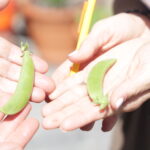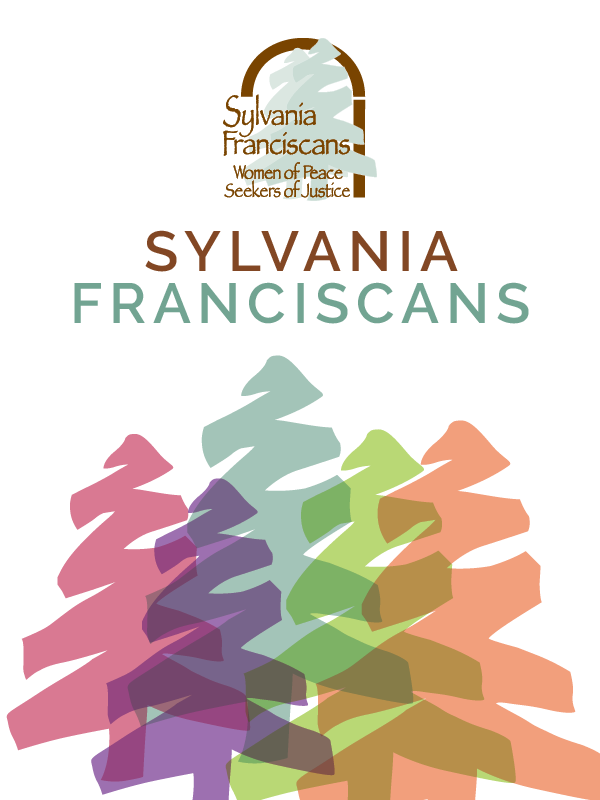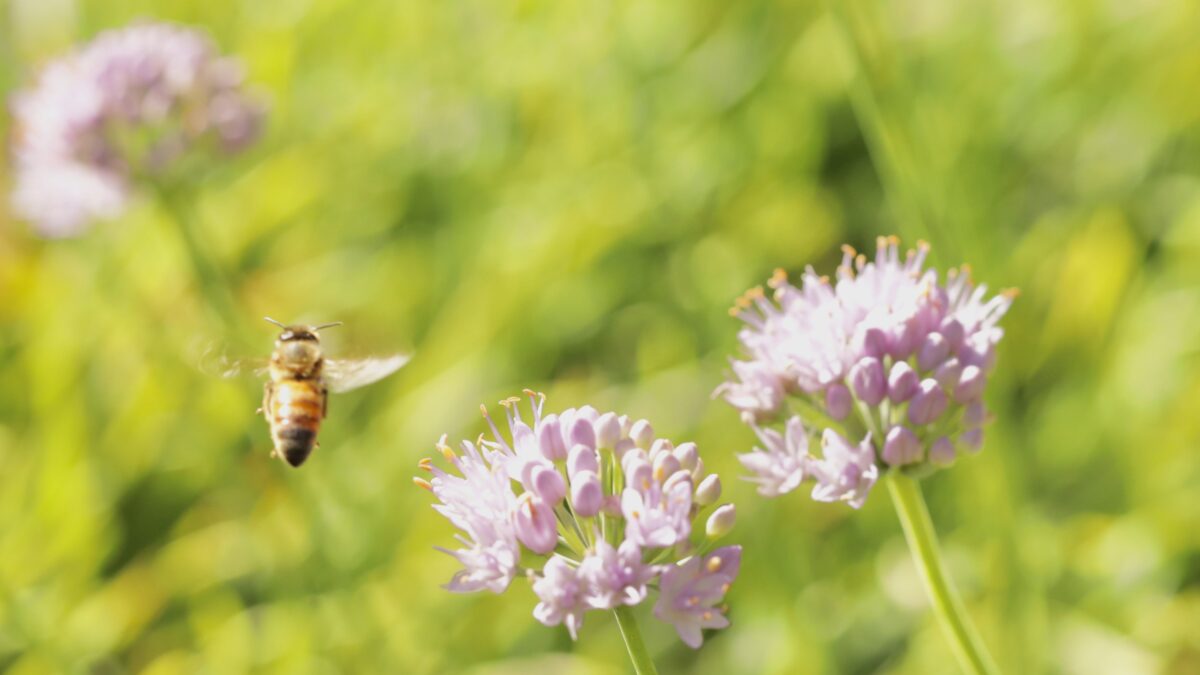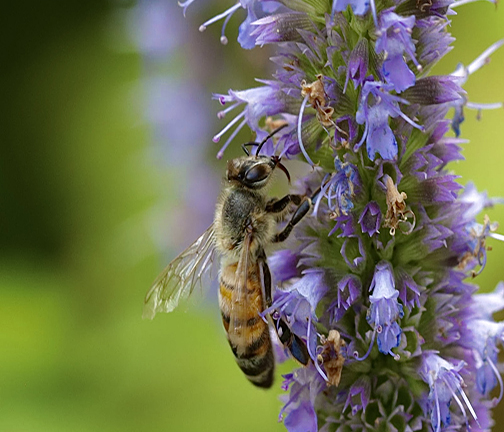
Nurturing Nature through Organic and Regenerative Agriculture
July 1, 2024
Be Kind – It Costs Nothing
August 29, 2024by Sara Grunberg
August 2
What’s the Buzz:
Imagine yourself frolicking through a patch of wildflowers and among you are hundreds of pollinators buzzing around. The calming buzz of the devote pollinators, the fragrant floral scent, and the warm sun shining on your skin. What a beautiful sight you are envisioning all thanks to the pollinators who make possible the diverse life of wildflowers.
What is pollination you may ask? Pollination is the transfer of pollen from one plant to another, which allows the plant to reproduce and bear fruit. This is done through the assistance of pollinators who are defined as “biotic agent, animals, or vector that moves pollen from anthers to stigma of a flower” (Das, 2018). Pollinators come in all shapes and sizes, even scary looking sometimes. Yes, I am talking about wasps and hornets who also contribute to pollination. They are friends, not foes. Without pollinators, we simply would not have crops for food or flowers. About 75% of flowering plants rely on pollinators and over 200,000 species of animals act as pollinators. Of those animals, about 1,000 are hummingbirds, bats, and small animals. The rest are insects such as beetles, bees, moths, butterflies, and ants (USDA).
Of the 75% of flowering plants, 35% represent the world’s food crops that depend on animal pollination. This equates to 1 in every 3 bites of food on your plate depending on the services of pollinators (USDA). Therefore, pollination services are directly linked to food security for human populations. Without adequate pollination, the availability and diversity of fruits and vegetables would be severely impacted, potentially leading to nutritional deficiencies.
As many things in our world during these trying times, many pollinator species are facing population declines due to factors such as habitat loss, heavy pesticide use, diseases, increased pests, and climate change (USDA). Another threat to pollinators is the lack of forage they have access to due to habitat fragmentation. This means that pollinators aren’t finding the right quantity or quality of food, nectar and pollen, from blooming plants within flight range. So, to help our pollinator friends, fill your gardens up with a diverse selection of native plants. In addition, did you know dandelions are the first food source for bees emerging in the spring? Leave them in your yard to help feed the bees!
Honeybees are one of the most well-known pollinators, and for good reason too. Honeybees are critically essential to pollination as it is assumed they contribute to 80% of insect pollination (Das, 2018). In recognition of the importance of honeybees as pollinators, the Sisters of St. Francis of Sylvania, Ohio have established two hives on campus. They are tended by a group of lay employees who volunteer their time to care for them. Again, this is another way the Sisters have responded to the call of creation outlined in Laudato Si’, written by Pope Francis.
According to the U.S. Department of Agriculture, there are many ways we can help bees and other pollinators right in our back yard!
Overall, pollinators are indispensable to both natural ecosystems and human societies, contributing to food production, biodiversity conservation, economic prosperity, and environmental sustainability. This month I am challenging you to stop and smell the roses (and notice the lovely pollinators that visit the flowers). Share your “call to action” success of your sustainable moment by sending pictures of our pollinator friends to Maegen Anders at manders@sistersosf.org. Notice the tremendous work our small but mighty pollinators do to provide us with beautiful flowers and delicious food on our table. Together, small choices can provide great impact. This earth is not ours to inherit, but one we need to protect for future generations.
Sara Grunberg
 In the role of Sustainability Coordinator for Lourdes University and the Sylvania Franciscans, Sara Grunberg works as the common link between all campus ministries in achieving a sustainable campus. Sara was raised in the Franciscan tradition as a student at Sylvania Franciscan Academy, later graduating from Notre Dame Academy. At the University of Dayton, she earned a B.S. in Environmental biology, worked on a student-run farm, and learned beekeeping. From there, she attended the College of Charleston for a master’s degree in environmental and sustainability studies.
In the role of Sustainability Coordinator for Lourdes University and the Sylvania Franciscans, Sara Grunberg works as the common link between all campus ministries in achieving a sustainable campus. Sara was raised in the Franciscan tradition as a student at Sylvania Franciscan Academy, later graduating from Notre Dame Academy. At the University of Dayton, she earned a B.S. in Environmental biology, worked on a student-run farm, and learned beekeeping. From there, she attended the College of Charleston for a master’s degree in environmental and sustainability studies.







